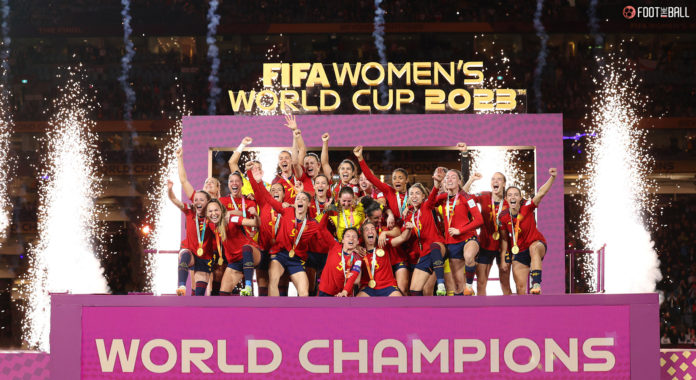Almost a decade after their male counterparts, the women of Spain reached the zenith of football after beating European champions England in the final of the 2023 FIFA World Cup. In a tightly contested game that saw chances plenty for both teams, it was decided by a solitary goal scored by Spain’s Olga Carmona’s brilliant finish in the first half.
This was the first final for both the teams, and with this victory, La Roja became only the fifth team to win the illustrious tournament. Before the tournament began, Spain had a formidable squad but was not considered as one of the favourites.
This is despite them having several of the best players in the world—the reason being Spain’s poor record on the world stage. In fact, this is only the third World Cup they are playing, with their debut appearance only coming in the 2015 edition.
It was in 2015 that they also appointed Jorge Vilda, the man who has been instrumental in the team’s rise, which ended in style at the Stadium Australia, where they won football’s ultimate prize.
So, how did La Roja go all that way to win the ultimate prize?
Group Stage: A solid start followed by a crashing defeat
Despite not being counted as a favourite to win the prize, Spain were expected to get out of their group, which included 2011 champions Japan, Zambia and Costa Rica. And the Spaniards started their campaign in style, beating Costa Rica and Zambia 3-0 and 5-0, respectively.
These two games were a perfect reminiscence of the attacking firepower that the team possessed. It also got Spain six points which guaranteed them qualification to the knockouts. However, they still had to battle Japan, who had been equally good, thrashing Zambia and Costa Rica 5-0, 2-0 respectively.
With top place at stake, Spain produced perhaps their worst-ever display in their World Cup history as they let in four goals without reply against Japan. This not only cost them first place but also was a massive dent in the team’s confidence.
There was massive pressure on the team, but the silver lining was that they were still alive in the tournament and had their destiny in their hands.
Knockouts: La Roja perform in every scenario
Their first challenge after the horrific loss against Japan were Switzerland. Vilda knew that only a dominant performance from his team would alleviate the scars of the 4-0 defeat. And this is what exactly followed as Spain put four goals past the Swiss in the first 45 minutes. The match ended 5-1, and the Spanish World Cup campaign was back on track.
Though the win was dominant, what followed for the next three games was what made them champions. Before their quarter-finals against the Netherlands, Spain had won and dominated in three games and were thrashed in one. So the one thing fans and the team were still in doubt was whether the team could perform or be able to nick an ugly win when it was not their day.
And the game against the Dutch would pose them the exact question. If one reads the stats of the games regarding shots, it would read Spain: 28, The Netherlands: 10. However, despite being so dominant, they failed to score till the 81st minute when they were awarded a penalty. Mariona Caldentey stepped up to convert the spot kick, but with the game just minutes away from finishing, the Dutch responded through Stefanie van der Gragt.
The game went into extra time, and with the team needing a winning goal, their youngest player Salma Paralluelo stepped up and scored an astounding goal to get them into the semi-finals.
Sweden awaited them in the last four, who were also in high spirits after knocking out tournament favourites the United States in the round of 16 and Japan in the quarter-finals.
The semi-finals were a repeat of the quarter-finals, with both teams unable to score till the 81st minute when Paralluelo again proved her worth by scoring her second goal of the tournament. The Swedes came back seven minutes later, but Spain launched an immediate attack from the resulting kickoff to score and go into the final.
Spain now had England, the reigning European champions facing them in the final. In fact, it was the first appearance for both teams in the tournament’s final. Despite the pressure of the final, both teams played an attacking brand of football that saw plenty of chances. However, both teams failed to finish them, with both goalkeepers Cata Coll and Mary Earps making brilliant saves.
In the end, it was the Spanish defender who produced an accurate finish from a tight angle to give the lead. The English had a lot of chances to equalise but failed to do so. On top of that, Spain were also awarded a penalty after a VAR check, but the resultant spot kick was saved by Earps.
This article is sponsored by Mtalkz, an Omnichannel Cloud Communication PaaS Provider enabling businesses to connect, engage and grow customers using cloud based portfolio of services.




